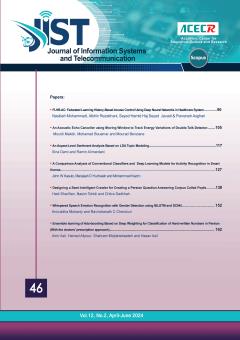Facial expressions determine the inner emotional states of people. Different emotional states such as anger, fear, happiness, etc. can be recognized on people's faces. One of the most important emotional states is the state of fear because it is used to diagnose many di
More
Facial expressions determine the inner emotional states of people. Different emotional states such as anger, fear, happiness, etc. can be recognized on people's faces. One of the most important emotional states is the state of fear because it is used to diagnose many diseases such as panic syndrome, post-traumatic stress disorder, etc. The face is one of the biometrics that has been proposed to detect fear because it contains small features that increase the recognition rate. In this paper, a biological model inspired an early biological model is proposed to extract effective features for optimal fear detection. This model is inspired by the model of the brain and nervous system involved with the human brain, so it shows a similar function compare to brain. In this model, four computational layers were used. In the first layer, the input images will be pyramidal in six scales from large to small. Then the whole pyramid entered the next layer and Gabor filter was applied for each image and the results entered the next layer. In the third layer, a later reduction in feature extraction is performed. In the last layer, normalization will be done on the images. Finally, the outputs of the model are given to the svm classifier to perform the recognition operation. Experiments will be performed on JAFFE database images. In the experimental results, it can be seen that the proposed model shows better performance compared to other competing models such as BEL and Naive Bayes model with recognition accuracy, precision and recall of 99.33%, 99.71% and 99.5%, respectively
Manuscript profile


